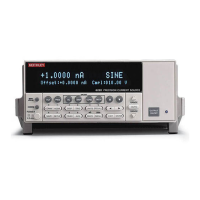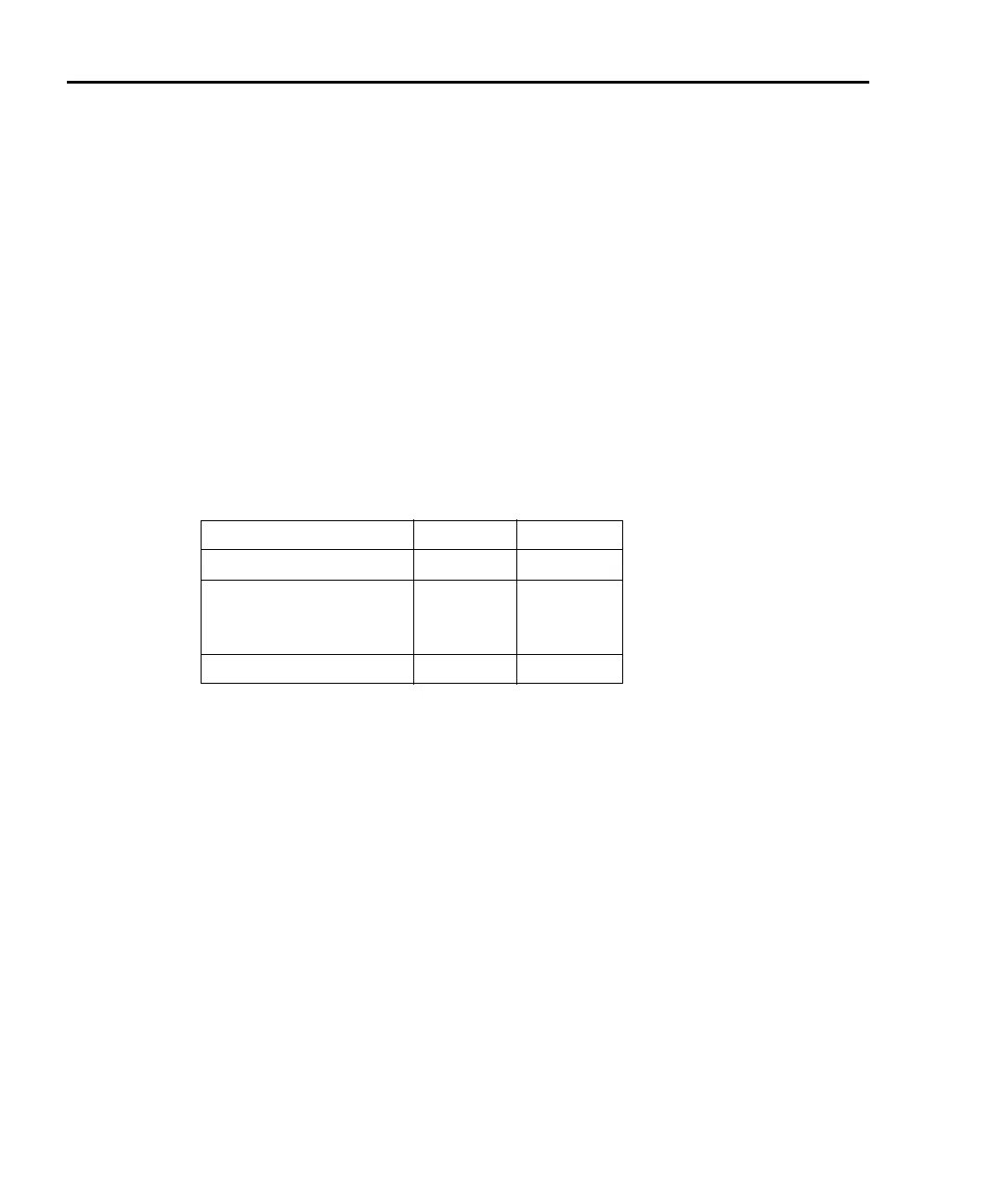6-2 Averaging Filter, Math, and Buffer Model 6220/6221 Reference Manual
Return to Section 6 topics
Averaging filter
The average filter can be used with Delta, Pulse Delta, and Differential Conduc-
tance. There are two types of averaging filter: moving and repeating. “Filter type”
is explained on page 6-3.
The averaging filter stabilizes noisy delta measurements caused by noisy input
signals. For Delta, Pulse Delta, and Differential Conductance, readings from the
Model 2182/2182A are processed by the Model 622x as delta voltage readings.
These delta readings can then be filtered by the Model 622x. Data (reading) flow
from the Model 2182/2182A through the averaging filter is explained in “Data flow,”
on page 5-13.
Table 6-1 lists the filter types that can (yes) and cannot (no) be used with the vari-
ous delta tests. Note that the filter must be enabled before arming the delta test.
1. If the moving average filter is enabled when Differential Conductance
is armed, the filter type will change to repeating.
2. If the repeating average filter is enabled when Pulse Delta
(Sweep output) is armed, the filter type will change to moving.
Averaging filter characteristics
Filter count
The filter count specifies how many delta readings (within the filter window) to
place in the memory stack. Keep in mind that there are three A/Ds for every Delta
and Differential Conductance reading, and two or three A/Ds for every Pulse Delta
reading.
When the stack is full, the readings are averaged to calculate the final filtered
delta reading. The filter count can be set from 2 to 300. However, only readings
within the filter window will be displayed and stored, or transmitted (see “Filter win-
dow,” on page 6-5 for details).
Table 6-1
Average filter types
Average Filter Moving Repeating
Delta Yes Yes
Pulse Delta:
Fixed output
Sweep output
Ye s
Ye s
Ye s
No
2
Differential Conductance No
1
Ye s
Test Equipment Depot - 800.517.8431 - 99 Washington Street Melrose, MA 02176 - TestEquipmentDepot.com

